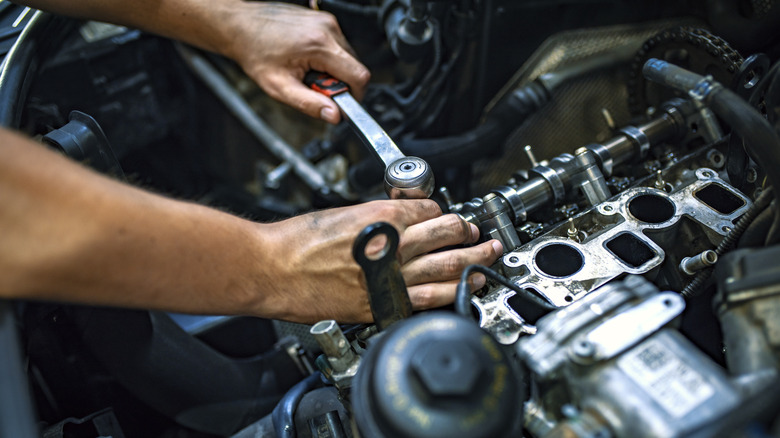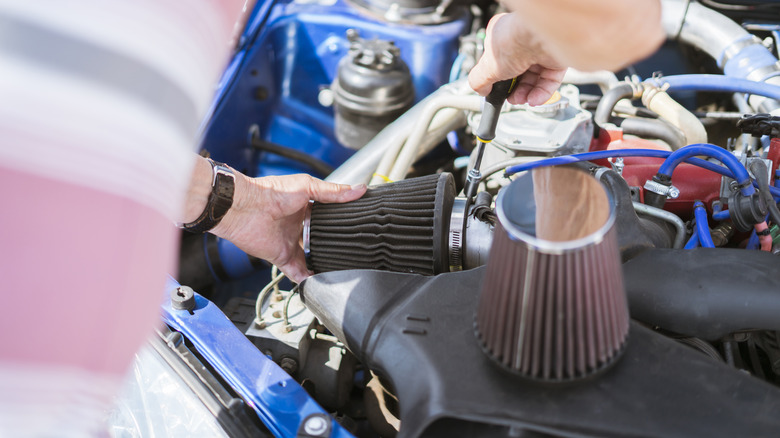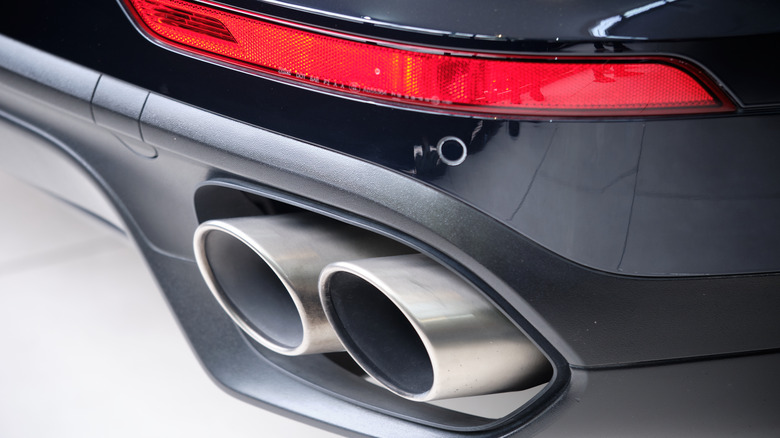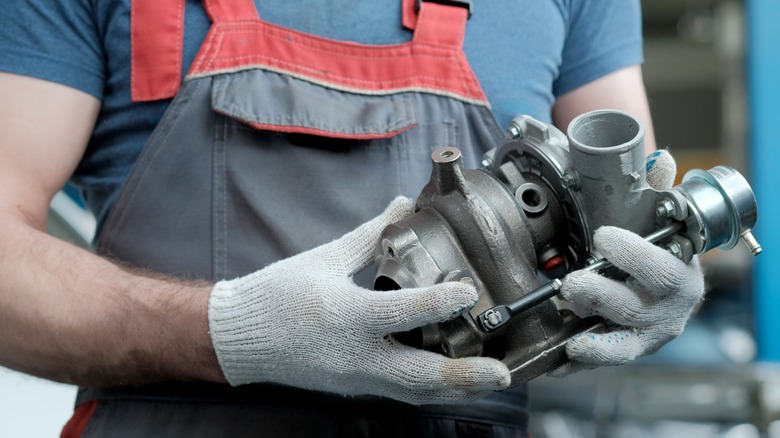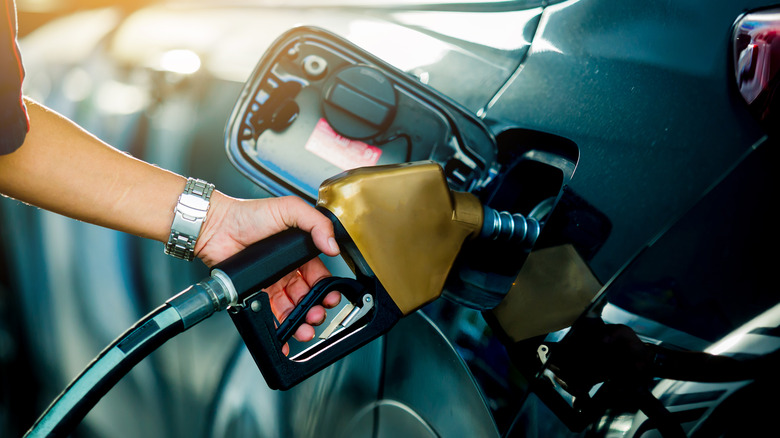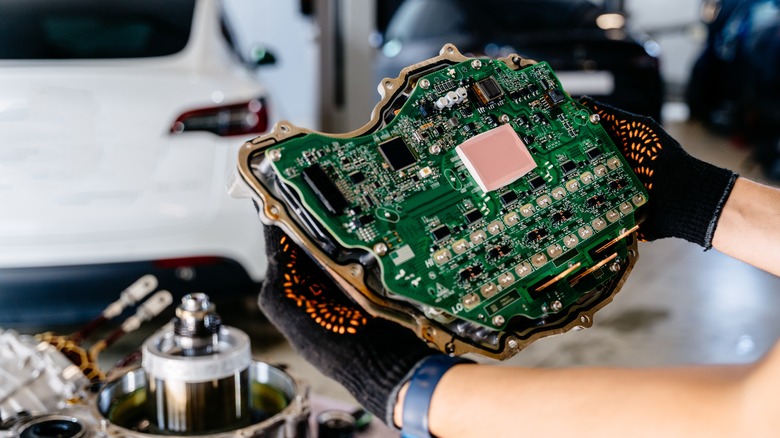5 Ways To Get More Horsepower Out Of Your Car
Getting more horsepower out of your engine isn't just about hitting top speeds while cruising through the highway. Rather, a high horsepower can help you get out of tricky situations since your car will be able to accelerate a lot quicker. Moreover, the additional power helps you maintain a quick pace while driving through rugged terrain or going uphill without overstressing the engine.
But if your car doesn't have a naturally powerful engine, how can you enhance its power output? Swapping out your current car for a high-performance model is not a practical option due to the cost and hassle involved. However, there are modifications you can make to increase your engine's horsepower and performance.
While some of these modifications may require a mechanic's expertise, you can also go the DIY route, in most cases, if you're willing to put in some elbow grease. Just make sure you're sourcing the required parts from reliable manufacturers or dealers so you're assured of the quality and compatibility of the parts with the specific model you own.
Install a cold air intake
Modern vehicles have pretty efficient air intakes. However, they're designed to suit the average driver's performance needs, balancing noise level and fuel efficiency. Given this, a stock air intake has its limitations when it comes to maximizing airflow to the engine. This is where a cold air intake can help.
Cold air is denser than warm air. This essentially means that the colder the air is, the more oxygen it contains. When cold air enters the combustion chamber through the cold air intake, the extra oxygen enhances the combustion efficiency. This, in turn, translates to a better power output.
The good news is that changing your vehicle's stock air intake is fairly straightforward. You can DIY the process if you can locate your original air filter and put in a little bit of elbow grease to install the new intake. There are plenty of online guides available that can walk you through the process. That said, you can also get the intake replaced by a certified mechanic. This will ensure proper fit and optimal performance of the new intake.
Once the new intake is installed, you should notice a difference in your vehicle's performance and possibly even the fuel efficiency. While increased horsepower is the most obvious advantage of swapping your car's air intake filter, another perk is that aftermarket air intakes are usually washable, which means you won't have to replace the intake from time to time.
Install a cat-back exhaust system
Now that you've swapped out the air intake to increase cold air inflow to the engine, you also need an effective way to expel all that air. This is where a cat-back exhaust comes into play.
Think of a cat-back exhaust system as a high-performance upgrade to the stock exhaust. This type of performance-oriented exhaust makes use of wider pipes with smoother bends, called mandrel bends, to expel the air. These bends help the air move through the pipe at the same velocity, which, in turn, reduces back pressure.
So, essentially, with a cat-back exhaust, your engine won't have to work as hard when dispelling air. This typically translates to increased horsepower. Keep in mind that you're only going to notice a difference in horsepower with a cat-back exhaust system if your current exhaust is restrictive with airflow. If the stock exhaust expels air efficiently, the improvement might be less evident.
Another indirect benefit of swapping out the stock exhaust for a cat-back exhaust is that your car is likely to become louder. This doesn't mean people will need earplugs every time you drive by, but it will help your exhaust produce a richer and deeper sound that many car owners might prefer.
Install a turbocharger or a supercharger
Turbochargers and superchargers help enhance horsepower in normally aspirated engines. However, there are a few differences between the two. Many modern cars come equipped with turbocharged engines. A turbocharger essentially uses the exhaust gases to spin a turbine. This causes more airflow into your engine, which, in turn, results in increased combustion efficiency and a boost in power.
Now, if your car comes fitted with a turbocharger, you'll need to install a larger turbocharger, i.e., one that uses a larger fan, to see a significant improvement in horsepower. But if you own an older car, using a normal turbocharger kit can boost your vehicle's performance.
An alternative to using a turbocharger is using a supercharger. A supercharger works somewhat like a turbocharger, but it is mechanically driven. A supercharger is connected to the engine via a chain or a belt that links to the crankshaft. When the crankshaft spins, the supercharger spins with it. This process creates a vacuum, which then compresses the air and directs it into the engine.
Since superchargers work in tandem with the engine, they don't experience the lag that turbochargers do. This results in an instant boost of power. That said, superchargers are less efficient. If you use a supercharger, you'll notice the difference in horsepower, but you'll be paying for it in terms of fuel economy.
So, while both are effective ways to increase horsepower, you'll need to decide which option suits your needs the best.
Use high-octane fuel
Many people mistakenly assume that using high-octane fuel will increase engine performance, even if they have an older car with a naturally aspirated engine. But this couldn't be farther from the truth.
The fact is that your car's manual will specify the type of fuel you need to use, and it's best to follow this recommendation. Keep in mind that using the right octane gas will help maintain the health of the engine.
So, is high-octane fuel useful at all for horsepower, or is it just a gimmick? The answer is that it depends.
High-octane fuel is recommended for turbocharged and supercharged engines because these engines are designed to handle higher compression ratios, and high-octane fuel is a better fit for such conditions. So, if your car is fitted with a normally aspirated engine, you can skip refueling your car with high-octane fuel.
On the other hand, using high-octane fuel for cars with turbocharged or supercharged engines will help prevent issues like knocking, which occurs when the fuel combusts prematurely in the engine cylinders. This type of fuel will help the turbocharged or supercharged engine perform at its best, allowing it to produce higher horsepower.
Tune your car's ECU
The Electronic Control Unit, also known as ECU, is a tiny but critical component in your car that controls the engine's operations and performance. Given this, if you'd like to improve your car's horsepower, tuning the ECU can help significantly.
Tuning an ECU essentially involves changing the car manufacturer's default settings and replacing them with new parameters to optimize your engine's performance. While it may seem daunting and time-consuming, experienced tuners in remapping companies and auto shops can do ECU tuning relatively quickly and, most importantly, correctly.
There are also aftermarket ECU tuning devices and tools available that can help boost your car's performance and drivability. Just make sure you verify the authenticity and reliability of these tools before you use one on your vehicle.
After you tune your ECU, you're likely to experience benefits beyond just the horsepower; in fact, improvements in fuel economy and throttle responses are commonly seen as well.
